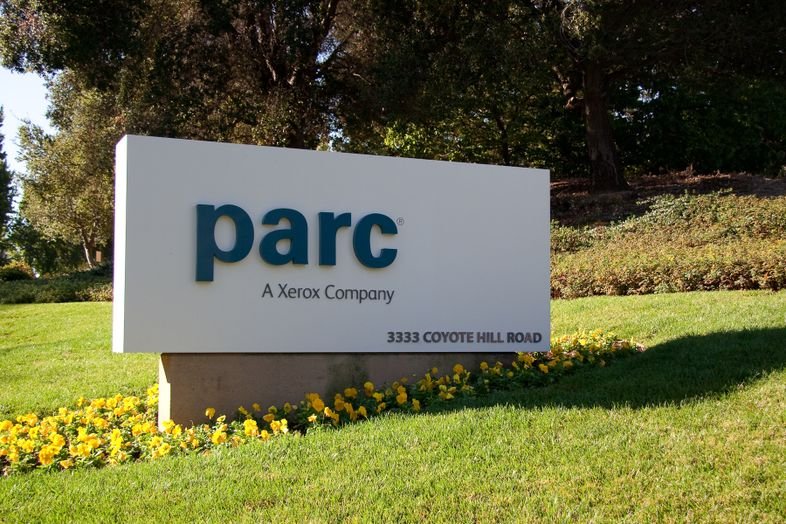
In 1970, Xerox, a company best known for its photocopiers, opened a research lab called the Palo Alto Research Center, or PARC. The goal was to imagine and build the future of office technology. What the researchers created went far beyond copying machines. They developed technologies that reshaped the entire computer industry.
Despite the breakthroughs, Xerox did not turn most of these inventions into successful products. Instead, other companies like Apple, Microsoft, and Adobe saw the potential and brought these ideas to the world. Understanding what happened at PARC helps us see where many modern technologies really come from.
This post dives into the key inventions and ideas born at Xerox PARC. It shows how this single lab quietly built the foundation for the computers, networks, and devices we use every day.
1. The Alto: The First Personal Computer
Introduced in 1973, the Xerox Alto was the first personal computer designed for individual use. It featured a graphical user interface (GUI), a mouse, and a keyboard. Elements that are now standard in personal computing. Although it was never sold commercially, the Alto influenced future personal computers and is considered a precursor to modern desktop systems.
2. Graphical User Interface (GUI)
PARC researchers developed the first GUI, moving away from text-based commands to visual elements like icons and windows. This innovation made computers more accessible and user-friendly, paving the way for systems like Apple’s Macintosh and Microsoft’s Windows.
3. The Computer Mouse
While the concept of a pointing device existed, PARC refined it into the modern computer mouse. Their design was more practical and efficient, influencing the development of input devices used in personal computing.
4. Ethernet: Connecting Computers
In 1973, Bob Metcalfe at PARC invented Ethernet, a networking technology that allowed computers to communicate over a local area network (LAN). Ethernet became the standard for networking, enabling the interconnected systems we rely on today.
5. Laser Printing
Gary Starkweather at PARC developed the first laser printer, which offered high-quality printing at faster speeds compared to existing technologies. This innovation revolutionized the printing industry and remains a core component of modern printing solutions.
6. WYSIWYG Text Editing
Xerox PARC introduced on-screen text editing that matched the final print layout. This approach shaped modern word processors like Word and Google Docs. Xerox built it but never owned the spotlight.
7. Smalltalk: Object-Oriented Programming
Smalltalk, developed at PARC, was one of the first object-oriented programming languages. It introduced concepts like classes and objects, which have become fundamental in software development.
8. Model-View-Controller (MVC) Architecture
The MVC design pattern, created at PARC, separates an application into three interconnected components: the model, the view, and the controller. This separation allows for modular development and is widely used in software engineering today.
9. Interpress and PostScript
PARC developed Interpress, a page description language for printing. Later, Adobe adapted this into PostScript, which became the standard for desktop publishing and printing.
10. Dynabook: The Vision of Portable Computing
Alan Kay at PARC envisioned the Dynabook, a portable personal computer for children to learn and create. While it was never built, the concept influenced the development of laptops and tablets.
11. Ubiquitous Computing
In the 1990s, Mark Weiser at PARC introduced the idea of ubiquitous computing, where technology becomes seamlessly integrated into everyday life. This vision is evident in today’s smart devices and Internet of Things (IoT) technologies.
12. Gyricon: The Electric Pape
PARC developed Gyricon, a form of electronic paper that could display text and images without power. This technology has applications in digital signage and e-readers.
13. Inkjet Printing
Building on their laser printing technology, PARC also contributed to the development of inkjet printing, offering another method for high-quality, efficient printing.
14. The Tablet
PARC’s research into portable computing led to the development of tablet-like devices, influencing the design of modern tablets and touch-screen interfaces.
15. The Personal Digital Assistant (PDA)
PARC’s work on personal computing devices contributed to the development of PDAs, which were precursors to today’s smartphones.
16. The LaserDisc
PARC researchers worked on the development of the LaserDisc, an early optical disc storage medium that influenced later technologies like DVDs and Blu-ray discs.
17. The Graphical File System
PARC developed a graphical file system that allowed users to interact with files visually, influencing the development of modern file management systems.
18. The Networked Computer
PARC’s work on networking technologies laid the groundwork for the development of networked personal computers, enabling the interconnected systems we use today.
19. The Digital Camera
PARC’s research into imaging technologies contributed to the development of digital cameras, which have become ubiquitous in today’s world.
20. The Touch Screen Interface
PARC’s exploration into touch-sensitive technology influenced the development of touch screen interfaces, now common in smartphones and other devices.
Final Thoughts
Despite Xerox not fully benefiting from PARC’s inventions, their work influenced countless products and companies that followed. The graphical user interface, the mouse, Ethernet, and many other breakthroughs started at PARC and now shape how we live, work, and communicate.
Xerox PARC was more than a lab. It was a place where some of the most important ideas in computing first took shape. The work done there changed how people interact with technology and laid the groundwork for the digital world.
What makes PARC’s story powerful is that it shows the value of exploration and long-term thinking. The researchers were free to test new ideas and take risks, even if the results did not bring immediate profits. This environment allowed innovation to flourish.
PARC teaches us that behind every big technology is a story of vision and patience. It reminds us that today’s everyday tools were once bold ideas in a quiet lab. Recognizing this helps us appreciate how far technology has come and encourages us to support innovation for the future.